https://www.38north.org/2021/10/north-koreas-progress-on-poultry-farms/?fbclid=IwAR0dcLE4Xqw2Oz2RTbwChGVoPlIQbgEWdnWMeSASDPBXNEkWoYG1I55ZoFE
North Korea’s Progress on Poultry Farms
BY: MARTYN WILLIAMS
OCTOBER 8, 2021
DOMESTIC AFFAIRS, SATELLITE IMAGERY
Commercial satellite imagery shows construction of the Kwangchon Chicken Farm—a large chicken farm south of Pyongyang—remains incomplete, more than a year after Kim Jong Un visited the site. However, the project continues to attract senior leadership visits and state media reports have hinted that completion is on the horizon.
The farm is situated about 20 kilometers south of Pyongyang just off the Pyongyang to Kaesong Motorway, next door to the large Korean People’s Army (KPA) Tree Nursery 122.
Figure 1. Aerial image of the Kwangchon Chicken Farm broadcast on Korean Central Television on July 23, 2020.
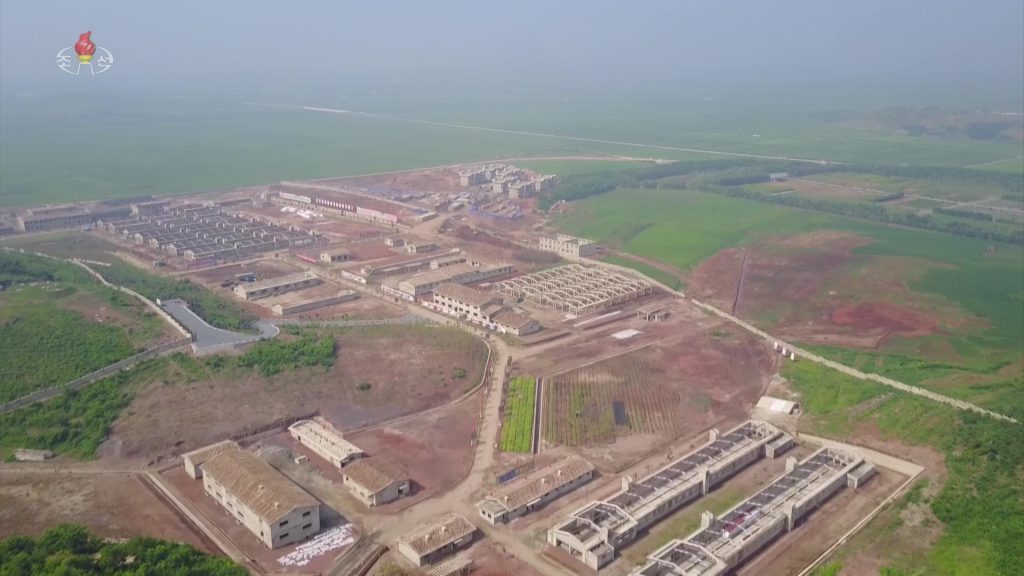 (Source: KCTV via Martyn Williams)
(Source: KCTV via Martyn Williams)First signs of construction appeared at the site in May 2019 when farmland was leveled for the project. However, the nature and progress of the work was not revealed by state media until July 2020 when Kim Jong Un visited the site.
Figure 2. Kim Jong Un is shown visiting the Kwangchon Chicken Farm in images broadcast on Korean Central Television on July 23, 2020.
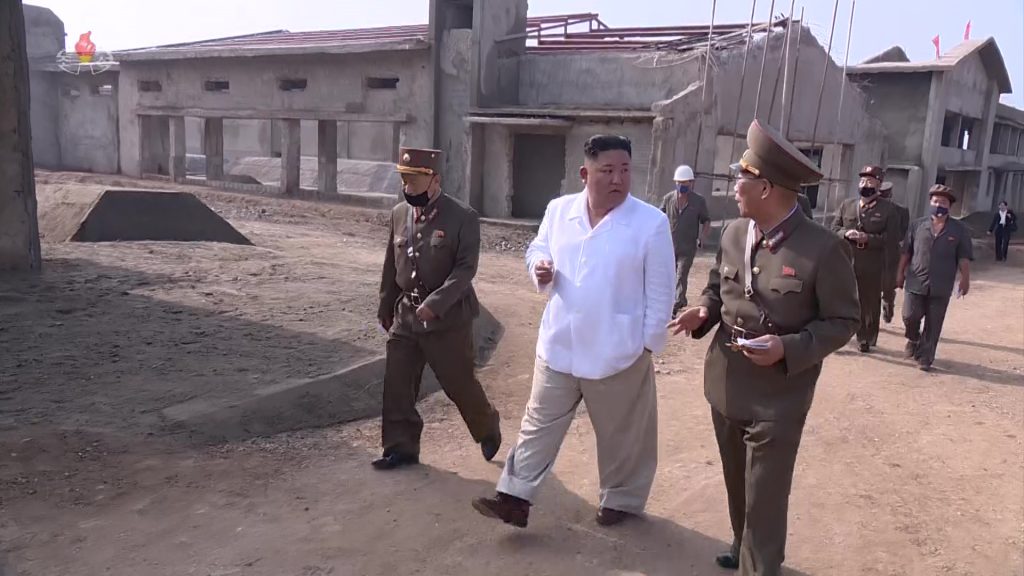 (Source: KCTV via Martyn Williams)
(Source: KCTV via Martyn Williams)During his visit, Kim said other “modernized” chicken farms in the country were actually 20 years out of date and the new Kwangchon farm would be a new model farm for the country.
It would, state media reported, “produce thousands of tons of delicious and quality meat and tens of millions of tasty and quality eggs every year.”
In the United States, the average farm chicken lays about 300 eggs per year thanks to modern feed and disease prevention, according to the Egg Farmers of America. Should North Korea be able to match that production level, it would require several tens of thousands of chickens to reach the stated egg production goals.
Figure 3. A chicken shed under construction is shown on Korean Central Television on July 23, 2020.
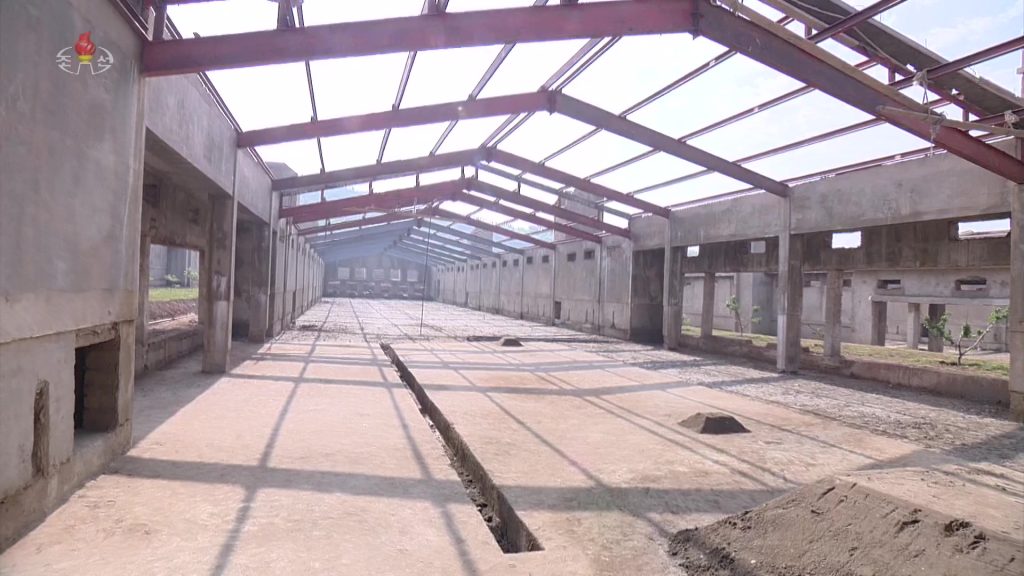 (Source: KCTV via Martyn Williams)
(Source: KCTV via Martyn Williams)The walls of the chicken sheds that will house these animals were already far along in their construction when Kim visited. State media images showed him walking alongside the roofless sheds as he inspected the farm.
Today, all the sheds have roofs and much of the construction appears to have been completed at the site, although the interior state of each building is unknown.
Figure 4. Overview of Kwangchon Chicken Farm.
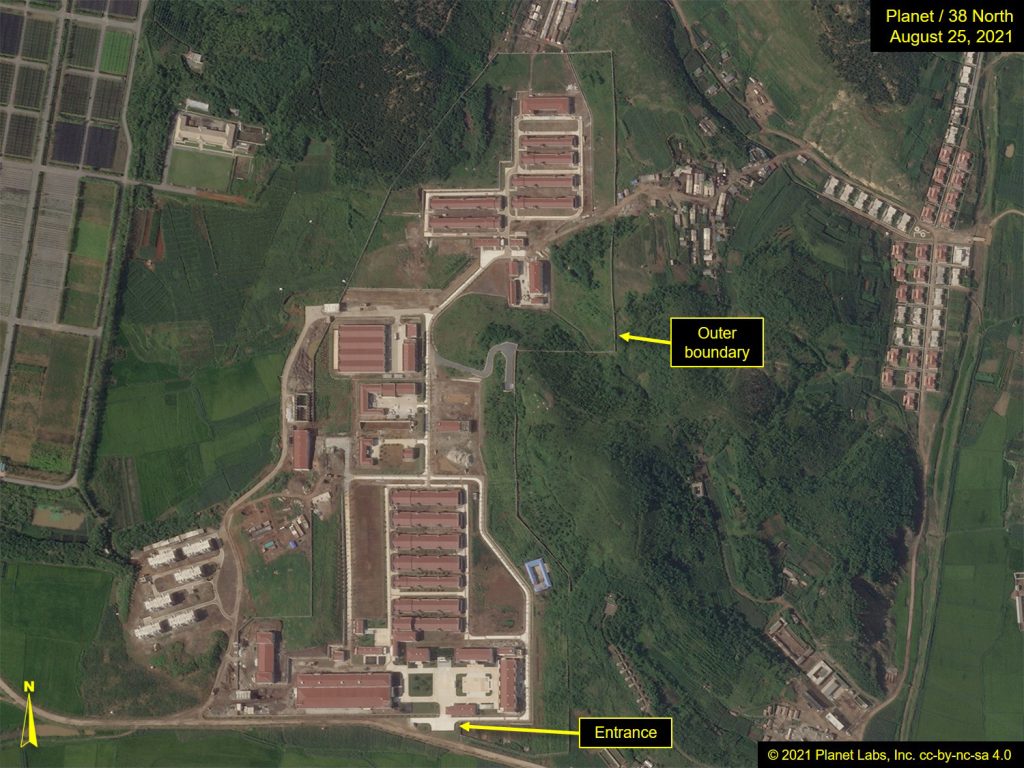 Image © 2021 Planet Labs, Inc. cc-by-nc-sa 4.0. For media licensing options, please contact thirtyeightnorth@gmail.com.
Image © 2021 Planet Labs, Inc. cc-by-nc-sa 4.0. For media licensing options, please contact thirtyeightnorth@gmail.com.While we cannot see inside the buildings, images from other chicken farms in North Korea indicate the country uses battery farming—rows of cages used to house egg-laying hens.
Figure 5. Close up of the 927 Chicken Farm using battery farming broadcast on Korean Central Television on September 6, 2021.
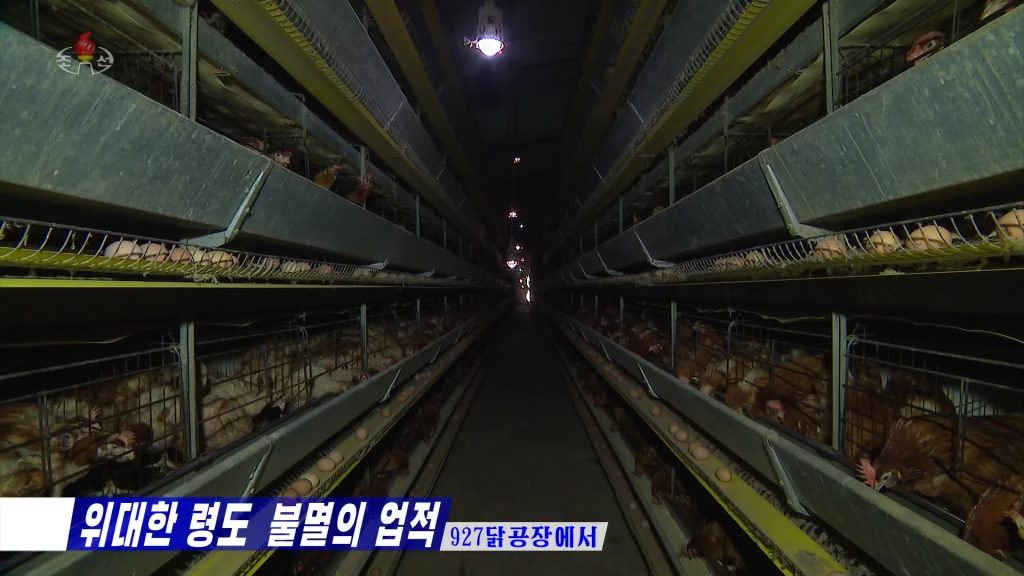 (Source: KCTV via Martyn Williams)
(Source: KCTV via Martyn Williams)Choe Ryong Hae made his second reported visit of 2021 to the farm in late June and state media reported that construction had yet to be completed.
Like other recent North Korean construction projects, state media revealed challenges have arisen. Choe reviewed “deviations” in the supply of equipment and material for the farm, a report given without going into further details.
However, the report also mentioned “preparations for afforestation and greening and inauguration of the farm” being discussed at the meeting. The planting of trees and other shrubbery is usually one of the final steps seen before projects are finished in North Korea, so the farm could be near completion.
In addition to the farm itself, the project has also involved the construction of nearby houses and apartments for workers at the farm and those that supply it with animal feed. State media reported that the houses were for around 1,000-2,000 families. Move-in ceremonies were held in late December 2020.
The new homes replaced many older homes that were already in the area before construction began.
Figure 6. Overview of Kwangchon Chicken Farm and housing.
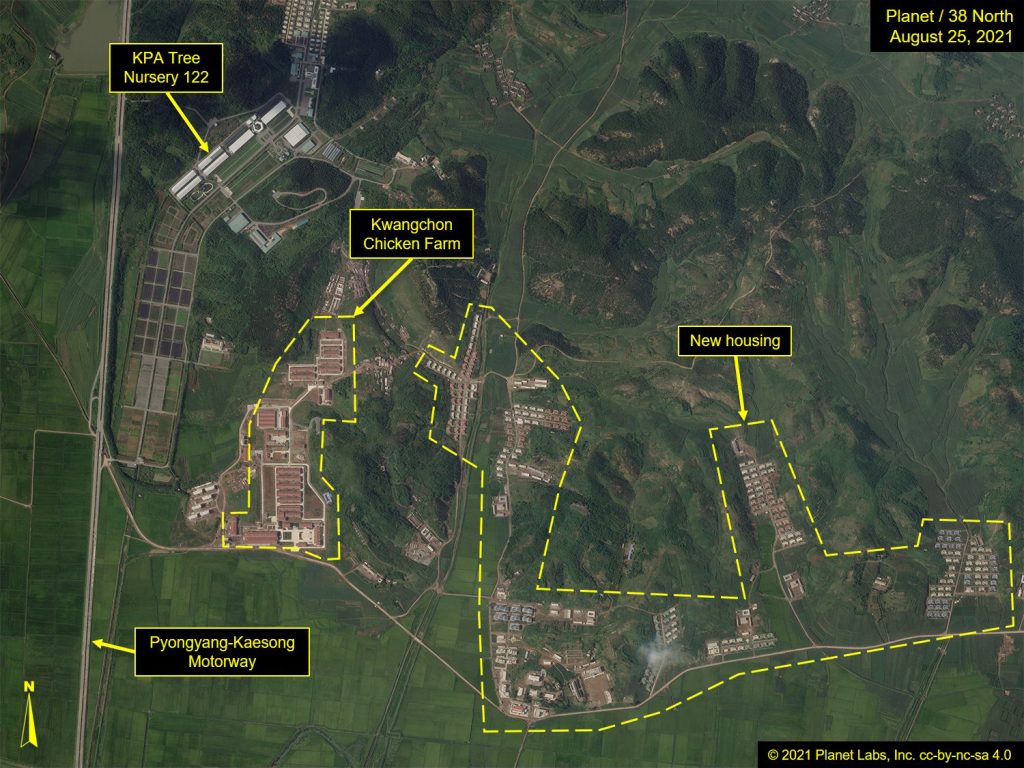 Image © 2021 Planet Labs, Inc. cc-by-nc-sa 4.0. For media licensing options, please contact thirtyeightnorth@gmail.com.
Image © 2021 Planet Labs, Inc. cc-by-nc-sa 4.0. For media licensing options, please contact thirtyeightnorth@gmail.com.North Korea has almost 30 chicken farms across the country. Their size varies but the new Kwangchon farm will be one of the largest.
State media has also recently reported on work at both the Kusong and Sinuiju chicken farms. In both cases, the work is focused on improving the feed supplied to the farms.
“The Sinuiju Chicken Farm remodeled its combined feed processing ground and newly established a fermented feed production line and a feed additive production line,” state media reported on August 25. “The Kusong Chicken Farm also set up fermented feed and feed additive production lines and built a ground for breeding Hermetia illucens to be used as feed for chickens.”
Satellite imagery of both locations does not reveal any major construction work.
Figure 7. Overview of Sinuiju Chicken Farm.
 Image © 2021 Planet Labs, Inc. cc-by-nc-sa 4.0. For media licensing options, please contact thirtyeightnorth@gmail.com.
Image © 2021 Planet Labs, Inc. cc-by-nc-sa 4.0. For media licensing options, please contact thirtyeightnorth@gmail.com.Figure 8. Overview of Kusong Chicken Farm.
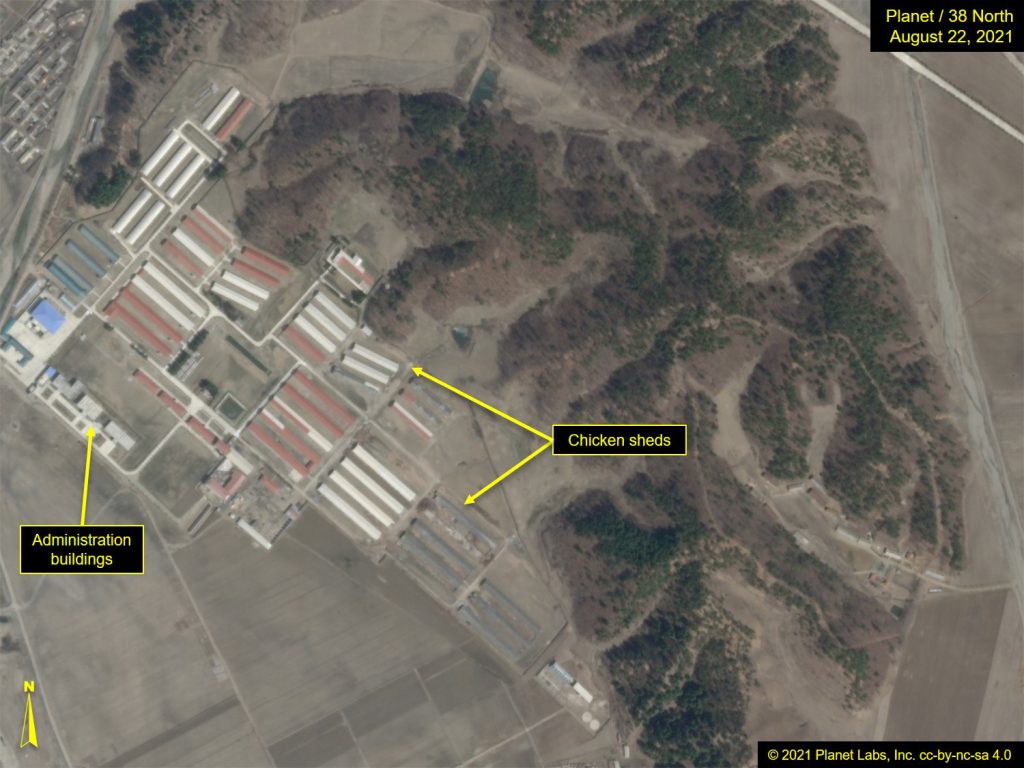 Image © 2021 Planet Labs, Inc. cc-by-nc-sa 4.0. For media licensing options, please contact thirtyeightnorth@gmail.com.
Image © 2021 Planet Labs, Inc. cc-by-nc-sa 4.0. For media licensing options, please contact thirtyeightnorth@gmail.com.CHICKENS
DOMESTIC AFFAIRS
ECONOMY
KCTV
MARTYN WILLIAMS
NORTH KOREAN AGRICULTURE
PLANET
PLANET LABS
SATELLITE IMAGERY
No comments:
Post a Comment